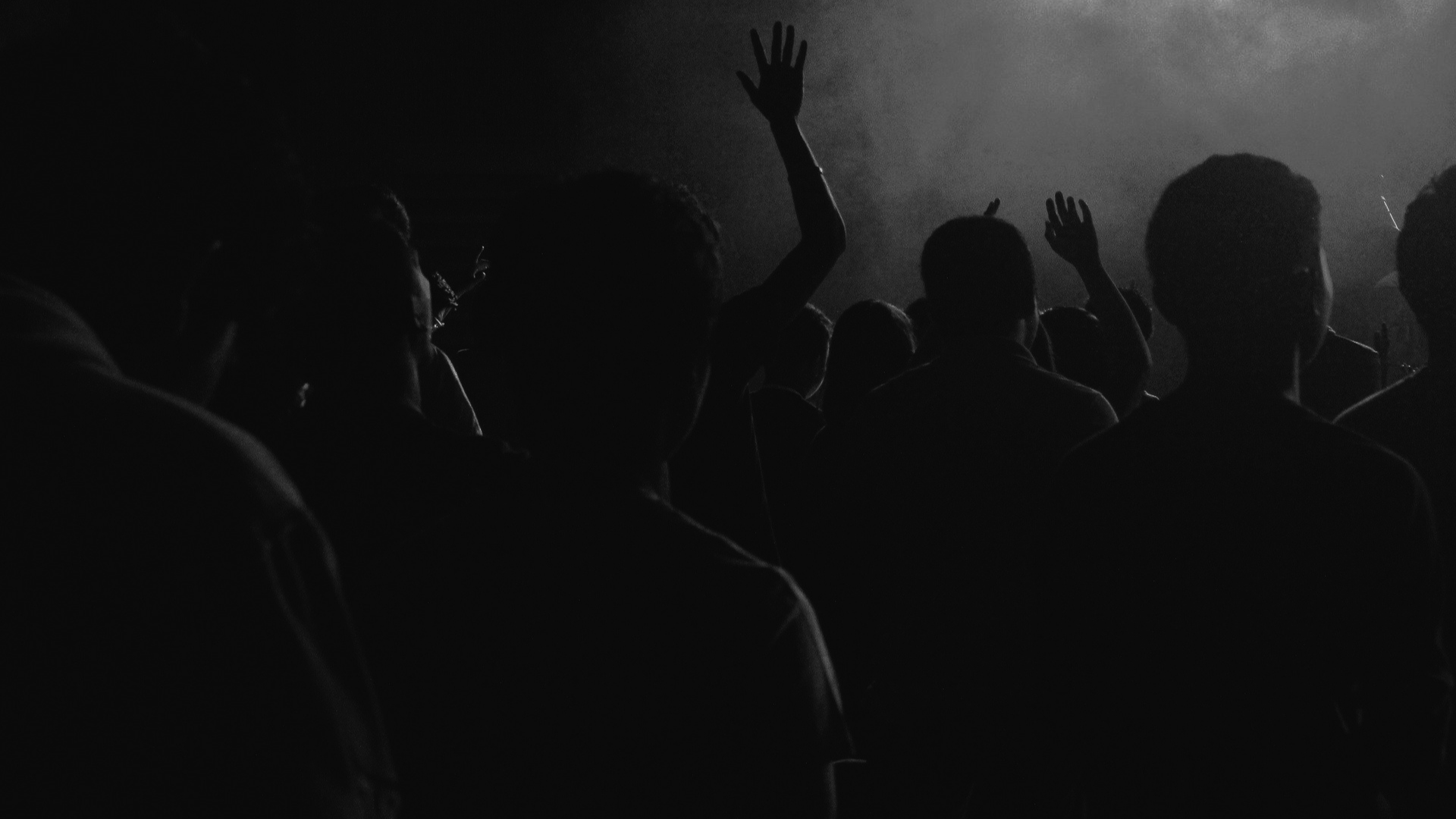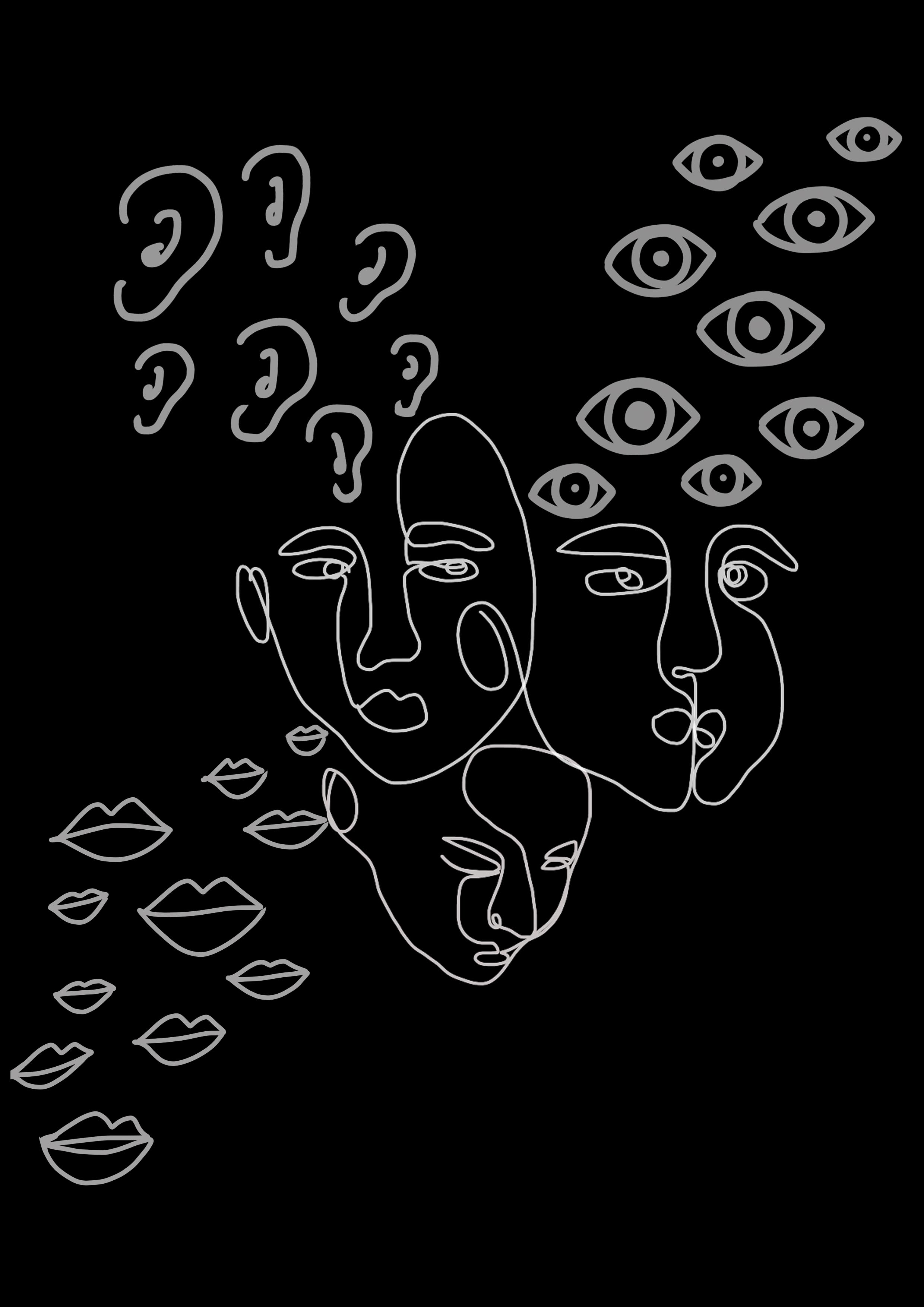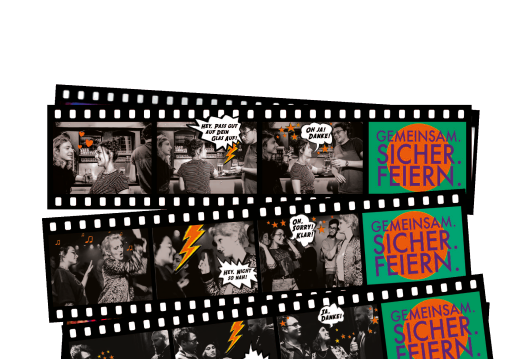


What is an awareness team and why is it important?
An awareness team is a group of at least two people. It is important that the tasks are not done by one person alone. In some situations, one person may not feel confident or at their strength to fulfil the awareness work. A team of people can support and step in for each other and give feedback. It is important that an awareness team represents social diversity. This is the only way you can offer a safe point of contact made up of people with similar experiences or even similar backgrounds. Therefore, you should make sure that your awareness team includes people of different genders, sexual orientations, and people of colour.
An awareness team is important because, unfortunately, boundary violations and assaults do happen. Boundaries are subjective and often difficult to express and understand, which can make it difficult for us to be empathetic. Certain settings and circumstances, especially in a party context, can be lastingly stressful or even traumatising. An awareness team sensitises people to structural discrimination: assaultive, boundary-violating behaviour is addressed and acted upon, and those affected should not feel alone and powerless. Ideally, everyone is sensitive and attentive to the needs and perspectives of others, but since this is not yet the case, an awareness team is essential so that we can all celebrate together, more safely.
What is an awareness team and why is it important?
An awareness team is a group of at least two people. It is important that the tasks are not done by one person alone. In some situations, one person may not feel confident or at their strength to fulfil the awareness work. A team of people can support and step in for each other and give feedback. It is important that an awareness team represents social diversity. This is the only way you can offer a safe point of contact made up of people with similar experiences or even similar backgrounds. Therefore, you should make sure that your awareness team includes people of different genders, sexual orientations, and people of colour.
An awareness team is important because, unfortunately, boundary violations and assaults do happen. Boundaries are subjective and often difficult to express and understand, which can make it difficult for us to be empathetic. Certain settings and circumstances, especially in a party context, can be lastingly stressful or even traumatising. An awareness team sensitises people to structural discrimination: assaultive, boundary-violating behaviour is addressed and acted upon, and those affected should not feel alone and powerless. Ideally, everyone is sensitive and attentive to the needs and perspectives of others, but since this is not yet the case, an awareness team is essential so that we can all celebrate together, more safely.
What are the responsibilities?
As an awareness team, you actively work against discriminatory and/or transgressive behaviour at an event by supporting those affected and being available as a contact person. Either you approach people, are asked by others for help, or are pointed out to them. During an event, anyone present can turn to the awareness team at any time. The attitude of the awareness team is basically one of partiality. This means that you declare your solidarity with those affected by discrimination. The goal of showing this support, is that the affected person feels able to act again: you create the conditions, so that the affected person can continue to participate in the event if they wish to do so. If it is necessary to expel people who are perceived as threatening from the event, you can do this in co-operation with the security team present. In some cases, people may want you to take over the communication with the person who is assaulting them. In other cases, you can help the affected to go home with a good feeling or creating a temporary shelter for the them where they can withdraw and process what has happened.
What can an awareness team ensure and what not?
Awareness not only means to be attentive whilst dealing with victims of violence and discrimination. It also means that you are conscious of the prevailing social balance of power, as discrimination against marginalised groups is not an individual case. In this sense, awareness is an attitude, an active responsibility, and responds to the fact that assaults also take place in our everyday environments.
The focus of the awareness team's action is on the needs and wishes of those affected. The person shouldn’t explain themselves, because the unquestionable, subjective view of what has happened defines the seriousness of a situation (power of definition). Since boundaries are subjective, only the affected persons themselves can say when they have perceived something as transgressive. The awareness team does not implement punishment but tries to shape the situation as best as possible in the sense of the affected persons. This can also mean consequences for those who have acted in an assaultive manner.
Everything you are told will be treated confidentially (confidentiality). In anonymous form you talk about it in the team (and if necessary, with the organisers), to reflect your work and to exchange ideas. Only if the person concerned agrees, you pass on information to others.
Organised structures of awareness policy at events cannot guarantee a safe space, but they can guarantee a safer space. Violations of boundaries and assaults cannot be ruled out. An awareness team cannot prevent them but can provide support in specific incidents. Some situations can be resolved immediately with your support, in other cases the affected person needs long-term support. For this, referrals must be made to selected counselling centres.
In a party context, if you perceive a situation as assaultive or a person approaches you, you have several options for response:
Consider whether you are the appropriate person to deal with the situation or whether you should in turn approach someone else.
Ask the affected person how they are feeling. (Questions like: Is everything okay? Are you okay with situation?)
When you approach the affected person, briefly explain why and what you perceived as a boundary violation.
Note, however, that you do not impose your perception on the person concerned. They may have a completely different perception of the situation.

Listen to the person concerned and take them seriously.
Respect the wishes and needs of the person involved, putting your own aside (if they do not want the accused person to be kicked out, respect that). It is important that the person involved is in control of the situation.
Offer support, such as a conversation or a way to get out of the situation. Ask them if they would like to withdraw (to the retreat room).
Confer closely with the affected person. Explain that your support is by acting in the interest of the wants and needs of the affected.
Ask the affected person if they would like to have a confidant present.
Be careful with questions. The person concerned should not get the feeling that they have to justify themselves. They may also feel uncomfortable or embarrassed about what happened.
Give yourself and the affected person plenty of time (in crises, ‘slowing down the pace’ is very important).
If a person does not want support, respect that and offer a specific place (for example, reporting to the counter) where they can get support whenever they want it. Nevertheless, try to keep an eye on the person a little bit to be able to offer support again in case of doubt.

An awareness concept is a text that you display prominently at the event. It contains important information, for example about rules of conduct, which all participants should read. It is important to clarify in this concept what kind of behaviour will not be tolerated at the event. What are your goals as an awareness team? How can affected persons recognise and contact you? You can find examples of what awareness concepts look like here.

To be able to provide support, your awareness team must be clearly visible at the event. For example, this can done by wearing buttons, t-shirts or stickers that the team members wear. You can display flyers or post your awareness concept, for example in the entrance area or in the toilets. It is also advisable to point out the awareness concept in advance to the party (via homepage, Facebook, flyers, etc.), and if possible, in different languages.

Your awareness team must be always available as well as aware of the overall situation. You can set up a fixed location or a telephone number, or the bar staff can be addressed and then contact the awareness group. At the same time, the awareness group acts as a mobile team, paying attention to the atmosphere of the event: what is the situation like on the dance floor, at the bar or at the toilets, etc.